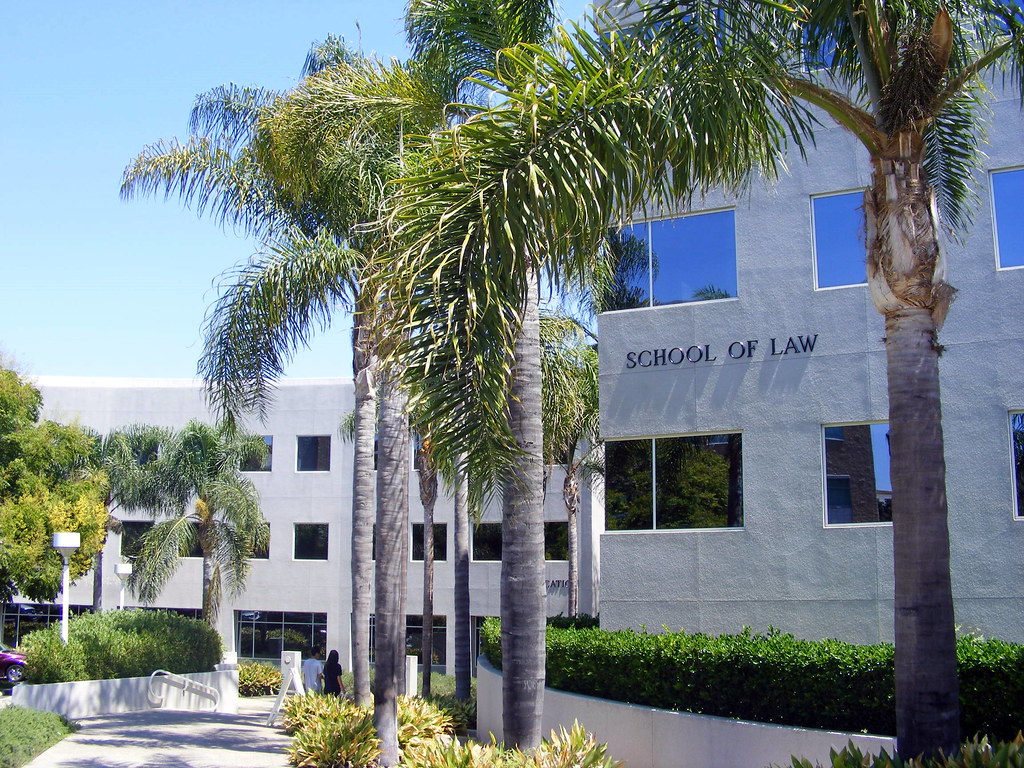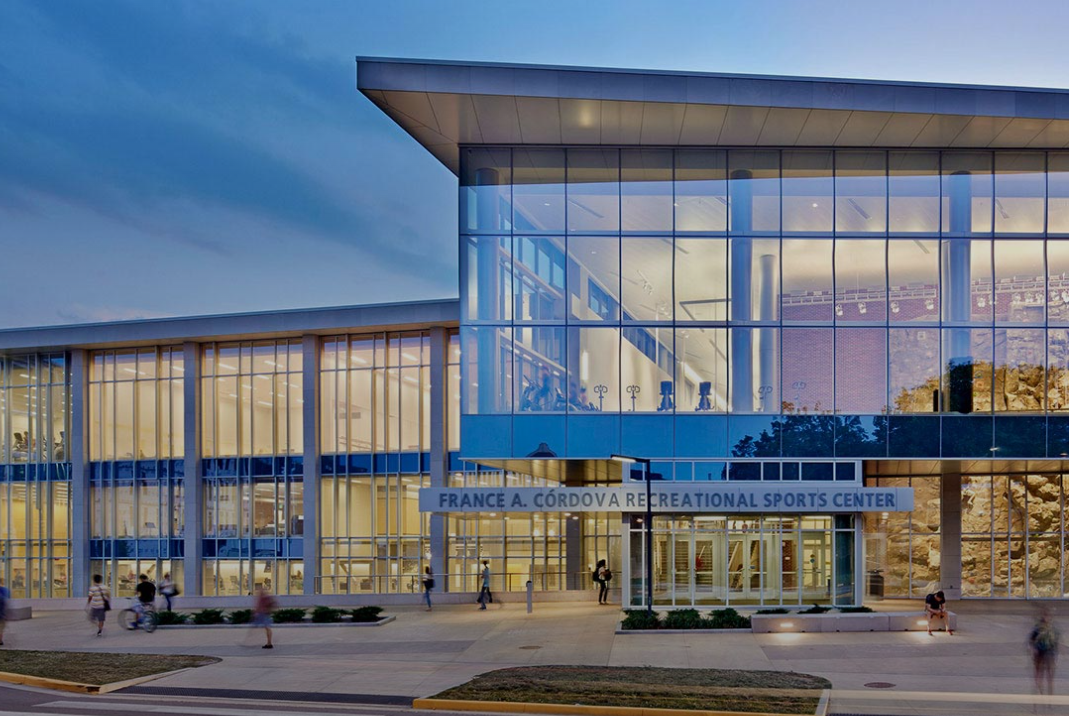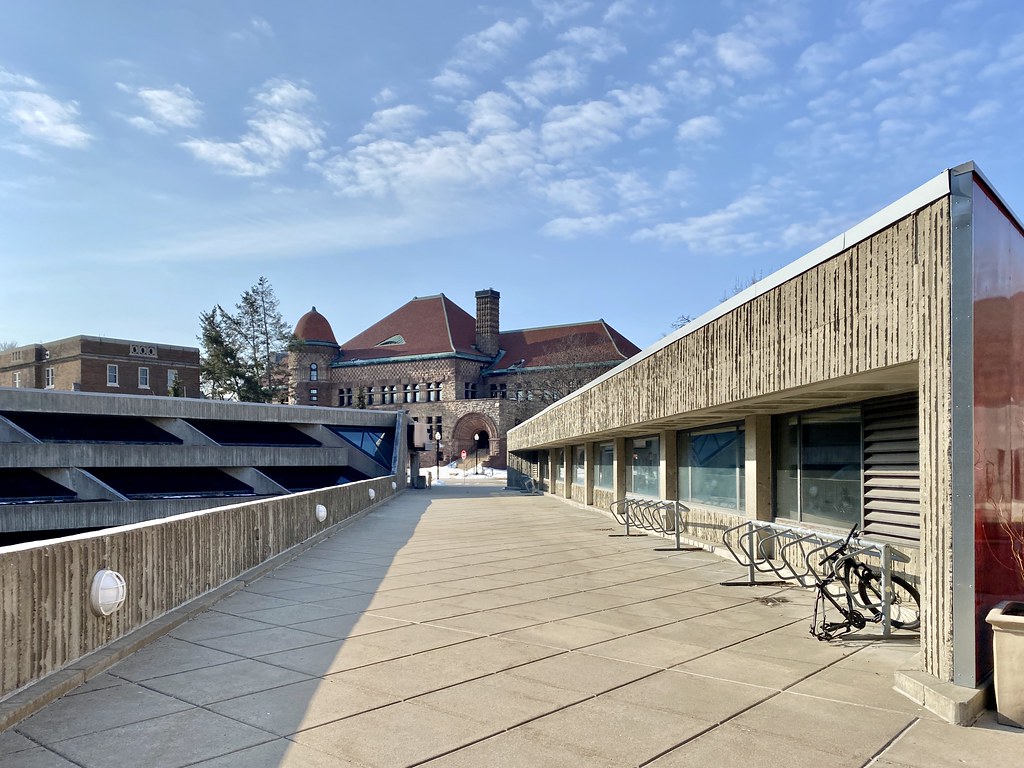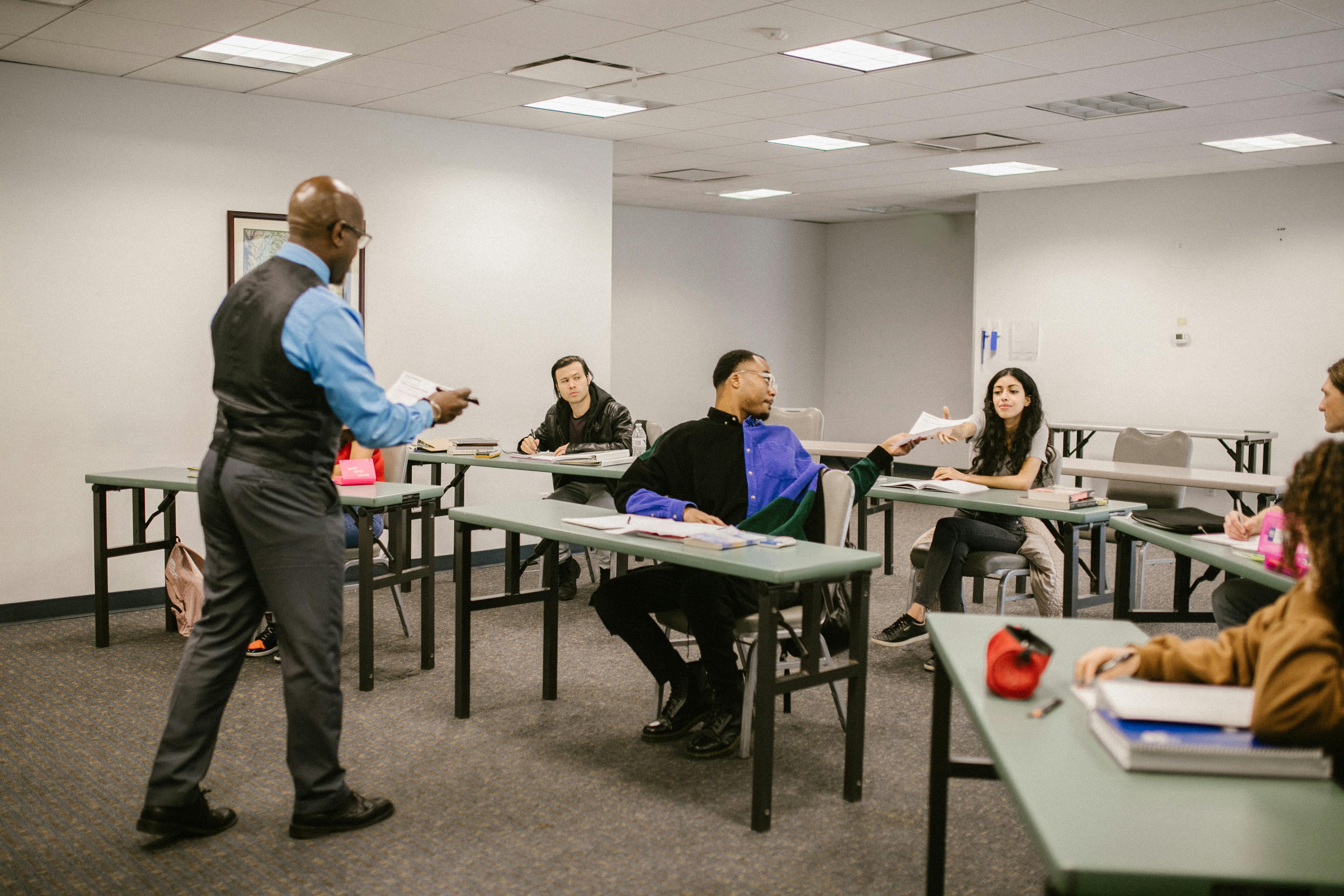Which American universities can be real safety schools? If unfortunately rejected by reach schools and target schools, are you willing to study at your safety school? In recent years, the competition for good universities has become increasingly fierce. Many people have to choose some safety schools as their plan B when applying to colleges. Join us as we compile great safety schools with unique features and high acceptance rates and lower your admission pressure.
What is a Safety School?
Safety schools usually refer to universities that an applicant chooses when applying for schools with relatively low admission requirements so that students are more certain to be admitted. Usually, students’ performance is better than the requirements of the safety school, with an acceptance rate of more than 75%.
When applying for universities in the United States, each student will choose several safety schools. On the one hand, safety schools can ensure applicants go further in their higher education for insurance purposes. On the other hand, it’s inevitable that applicants are anxious during the application season. Putting several suitable safety schools on your college list can alleviate your anxiety to a large extent.
How Many Safety Schools Should You Have?
Generally, everyone should prepare 2-3 reach schools, 4-5 target schools, and 2-3 safety schools for himself or herself. Studying in reach schools or target schools is every applicant’s optimal choice, but those schools are competitive, and there is a lot of uncertainty about the result of your admission. Safety schools can be the plan B for your higher education in case you are rejected by your reach schools and target schools and increase your chances of admission.
How to Find Good Safety Schools?
- Know yourself well: Applicants need to comprehensively analyze their academic scores, standardized test scores, and extracurricular activities and prepare letters of recommendation, documents, and other application materials to determine their advantages in the application.
- Learn about the institutions: Applicants need to know in detail the admission requirements of the institutions they want to apply, including the admission scores of previous years, the GPA of admitted students, and the standardized test scores, etc. Besides, the location and living environment of the guaranteed institutions are also factors that applicants need to consider.
- Consider subject rankings: Instead of the rankings of safety schools, most applicants intend to pay more attention to the rankings of specific programs or academic subjects when applying to universities. Applicants need to find safety schools that match their academic interests and have a strong reputation in their field.
25 Safety Schools for Your Backup Plan
1. University of Florida
| University | U.S. News Ranking 2025 National universities(tie) |
Acceptance Rate | Undergrad Enrollment | Average SAT/ACT | Tuition and Fees (in-state/out-of-state) |
|---|---|---|---|---|---|
| University of Florida | 30 | 24% | 34,924 | 1300-1480/28-33 | $6,381/$28,658 |
The University of Florida is a prominent public research university with an acceptance rate typically between 23% and 24%. For fall 2024, the number of applicants increased, but the university also offered more admissions, keeping the acceptance rate stable. UF is a good safety school choice, known for its strong academic programs and resources. The university looks for applicants engaged in extracurricular activities who demonstrate potential for academic success based on their past experiences.
2. University of Rochester
| University | U.S. News Ranking 2025 National universities(tie) |
Acceptance Rate | Undergrad Enrollment | Average SAT/ACT | Tuition and Fees (in-state/out-of-state) |
|---|---|---|---|---|---|
| University of Rochester | 44 | 36% | 6,764 | 1400-1540/31-34 | $67,124 |
The University of Rochester, a private research university established in 1850 in Rochester, New York, is home to the Eastman School of Music and the Memorial Art Gallery. It offers over 200 advanced degree programs in fields like music, medicine, and business. Admission may be slightly easier compared to top universities like Harvard and Yale, potentially providing more opportunities for diverse applicants.
3. University of California, Irvine
| University | U.S. News Ranking 2025 National universities(tie) |
Acceptance Rate | Undergrad Enrollment | Average SAT/ACT | Tuition and Fees (in-state/out-of-state) |
|---|---|---|---|---|---|
| University of California, Irvine | 33 | 26% | 29,503 | / | $14,737/$46,626 |
Founded in 1965, UC Irvine excels in science and technology, offering over 200 degree programs across various disciplines. It features advanced research facilities like the Museum of Biological Body Tissue and Zeiss electron transmission microscope. Known as a top safety school for computer science, UC Irvine also prioritizes student safety, making it one of the safest universities in California.

4. University of California, Davis
| University | U.S. News Ranking 2025 National universities(tie) |
Acceptance Rate | Undergrad Enrollment | Average SAT/ACT | Tuition and Fees (in-state/out-of-state) |
|---|---|---|---|---|---|
| University of California, Davis | 33 | 42% | 31,797 | / | $15,794/$47,682 |
The University of California, Davis, established in 1905, is a public institution in Northern California with an undergraduate enrollment of 31,797 as of fall 2023. It has an acceptance rate of about 40-50%, making it a popular safety school. UC Davis prioritizes equality in admissions, especially for first-generation college applicants, enhancing educational opportunities.
5. University of Illinois at Urbana-Champaign
| University | U.S. News Ranking 2025 National universities(tie) |
Acceptance Rate | Undergrad Enrollment | Average SAT/ACT | Tuition and Fees (in-state/out-of-state) |
|---|---|---|---|---|---|
| University of Illinois at Urbana-Champaign | 33 | 44% | 35,564 | 1340-1530/30-34 | $17,640/$36,760 |
Since its founding in 1867, the University of Illinois Urbana-Champaign has been a leader in research and teaching. It houses one of the largest libraries worldwide, with 15 million volumes across 20+ units. With an acceptance rate often over 60%, many consider it a safety school. Located in Champaign, Illinois, UIUC offers lower tuition and living costs compared to larger cities, making it more accessible for financially constrained students.
6. Pepperdine University
| University | U.S. News Ranking 2025 National universities(tie) |
Acceptance Rate | Undergrad Enrollment | Average SAT/ACT | Tuition and Fees (in-state/out-of-state) |
|---|---|---|---|---|---|
| Pepperdine University | 80 | 50% | 3,629 | 1250-1450/26-32 | $69,918 |
Pepperdine University is a leading private research university in California. It was founded in 1937 by Christian businessman George Pepperdine. Its main campus is located in Malibu, California, which is one of the most beautiful campuses in the US. Pepperdine University places great importance on many aspects of applicants, including academic achievements, GPA, paperwork, extracurricular activities, natural ability, personal character, and religious beliefs.
7. Purdue University
| University | U.S. News Ranking 2025 National universities(tie) |
Acceptance Rate | Undergrad Enrollment | Average SAT/ACT | Tuition and Fees (in-state/out-of-state) |
|---|---|---|---|---|---|
| Purdue University | 46 | 50% | 39,170 | 1190-1470/27-34 | $9,992/$28,794 |
Purdue University is a public research institution founded in 1869, with six campuses located in West Lafayette, Indianapolis, Fort Wayne, Hammond, Westville, and Hanover, Germany. The West Lafayette campus is the main campus, housing the largest colleges: the College of Engineering and the College of Agriculture. Purdue Fort Wayne is considered one of the safest schools in northeast Indiana, with over 200 academic options available.

8. University of Pittsburgh
| University | U.S. News Ranking 2025 National universities(tie) |
Acceptance Rate | Undergrad Enrollment | Average SAT/ACT | Tuition and Fees (in-state/out-of-state) |
|---|---|---|---|---|---|
| University of Pittsburgh | 70 | 50% | 20,220 | 1270-1450/29-33 | $21,926/$41,430 |
The University of Pittsburgh, located in Pittsburgh, Pennsylvania, is a prestigious public research university founded in 1787. The university is known for its academic excellence and comprehensive education system, especially in the fields of medicine, engineering, business and humanities. Students with student ID cards have free access to a gym, a botanical garden, and some museums, as well as zoo visits and movies with some discounts.
9. The Ohio State University
| University | U.S. News Ranking 2025 National universities(tie) |
Acceptance Rate | Undergrad Enrollment | Average SAT/ACT | Tuition and Fees (in-state/out-of-state) |
|---|---|---|---|---|---|
| The Ohio State University | 41 | 51% | 45,728 | 1330-1480/29-32 | $13,244/$40,022 |
Ohio State University, founded in 1870, is one of the top public universities in the U.S. and is known as a Public Ivy. The University’s main campus is one of the largest campuses in the United States with an area of 65 km². It offers majors in almost all academic fields, especially in sociology, political science, economics, physics, astronomy, and journalism and communication, which are among the best in the world.
10. University of Washington
| University | U.S. News Ranking 2025 National universities(tie) |
Acceptance Rate | Undergrad Enrollment | Average SAT/ACT | Tuition and Fees (in-state/out-of-state) |
|---|---|---|---|---|---|
| University of Washington | 46 | 43% | 39,125 | 1260-1510/30-34 | $12,973/$43,209 |
The University of Washington, founded in 1861, has campuses in Seattle, Bothell, and Tacoma, along with a top-tier medical center. The UW emphasizes innovation and practical skills, offering 180 majors in Seattle. Freshmen are required to live on campus, and the university hosts a variety of engaging activities. With a higher acceptance rate compared to other top US universities, UW is a viable safety school option.
11. Rensselaer Polytechnic Institute
| University | U.S. News Ranking 2025 National universities(tie) |
Acceptance Rate | Undergrad Enrollment | Average SAT/ACT | Tuition and Fees (in-state/out-of-state) |
|---|---|---|---|---|---|
| Rensselaer Polytechnic Institute | 70 | 59% | 5,945 | 1360-1520/31-34 | $64,081 |
Rensselaer Polytechnic Institute is a private institution with over 190 years of history, recognized as a leading technological research university. It offers 145+ programs across five schools: Architecture, Engineering, Humanities, Arts and Social Sciences, Management, and Science. The focus is on practical problem-solving through collaborative projects and laboratory research. Alongside strong academics, students can engage in over 50 sports clubs and 200 student organizations for a vibrant campus life.
12. University of Minnesota
| University | U.S. News Ranking 2025 National universities(tie) |
Acceptance Rate | Undergrad Enrollment | Average SAT/ACT | Tuition and Fees (in-state/out-of-state) |
|---|---|---|---|---|---|
| University of Minnesota | 70 | 77% | 39,556 | 1310-1480/27-31 | $17,214/$38,362 |
When people mention the University of Minnesota, they often mean the University of Minnesota in the Twin Cities. With a 77% acceptance rate, this public research university serves as a safety school for many students. Located in the Twin Cities, a major Midwest metropolitan area, it offers abundant internship and career opportunities due to its proximity to numerous large international companies.

13. University of Massachusetts Amherst
| University | U.S. News Ranking 2025 National universities(tie) |
Acceptance Rate | Undergrad Enrollment | Average SAT/ACT | Tuition and Fees (in-state/out-of-state) |
|---|---|---|---|---|---|
| University of Massachusetts Amherst | 58 | 58% | 23,936 | 1300-1480/29-33 | $17,772/$40,449 |
The University of Massachusetts Amherst, founded in 1863, offers 110 undergraduate majors and 127 graduate programs, available both on campus and online. Students can engage in research, internships, and extracurricular activities. Its high acceptance rate makes it a competitive safety school, and the extensive alumni network supports graduates in preparing for careers.
14. Auburn University
| University | U.S. News Ranking 2025 National universities(tie) |
Acceptance Rate | Undergrad Enrollment | Average SAT/ACT | Tuition and Fees (in-state/out-of-state) |
|---|---|---|---|---|---|
| Auburn University | 105 | 50% | 26,874 | 1240-1380/25-31 | $12,890/$34,922 |
Founded in 1856, Auburn University is situated in Auburn, Alabama. The university offers over 130 degrees and state-supported programs in fields like agriculture, forestry, architecture, and pharmacy. Auburn also has a civilian airport for research visits and was the first prestigious school in Alabama to admit black students.
15. University of San Francisco
| University | U.S. News Ranking 2025 National universities(tie) |
Acceptance Rate | Undergrad Enrollment | Average SAT/ACT | Tuition and Fees (in-state/out-of-state) |
|---|---|---|---|---|---|
| University of San Francisco | 109 | 51% | 5,729 | 1210-1390/26-31 | $60,492 |
The University of San Francisco is one of the most prestigious campuses under the California State University system. Founded in 1899, it is a public university with a 100-year history. The school is located in the southwest of the city of San Francisco, with convenient transportation and a beautiful environment. There are seven colleges offering bachelor’s degrees in 77 academic fields, master’s degrees in 63 academic fields, and 3 doctoral degrees.
16. The Pennsylvania State University–University Park
| University | U.S. News Ranking 2025 National universities(tie) |
Acceptance Rate | Undergrad Enrollment | Average SAT/ACT | Tuition and Fees (in-state/out-of-state) |
|---|---|---|---|---|---|
| The Pennsylvania State University–University Park | 63 | 54% | 42,223 | 1220-1400/27-32 | $20,644/$41,790 |
Pennsylvania State University-University Park is located in the small eastern U.S. city of University Park, PA. It is just 17 miles from the Pennsylvania state capital of Harrisburg, which makes it the lowest acceptance rate campus among campuses of Pennsylvania State University. The university is dedicated to undergraduate teaching, graduate education, professional training, and adult education through traditional and online correspondence teaching.
17. University of Connecticut
| University | U.S. News Ranking 2025 National universities(tie) |
Acceptance Rate | Undergrad Enrollment | Average SAT/ACT | Tuition and Fees (in-state/out-of-state) |
|---|---|---|---|---|---|
| University of Connecticut | 70 | 54% | 19,388 | 1210-1420/29-33 | $21,044/$43,712 |
The University of Connecticut is one of the world’s leading public research universities in the United States. The university was founded in 1881 on land granted by the government and is located in Connecticut, known as the “Insurance Capital of the World”, which is rated as one of the richest and safest states in the United States. Its academic reputation is second only to Yale University in the state.
18. Illinois Institute of Technology
| University | U.S. News Ranking 2025 National universities(tie) |
Acceptance Rate | Undergrad Enrollment | Average SAT/ACT | Tuition and Fees (in-state/out-of-state) |
|---|---|---|---|---|---|
| Illinois Institute of Technology | 105 | 55% | 3,316 | 1180-1410/25-31 | $52,386 |
Founded in 1890, Illinois Institute of Technology is a well-established and reputable institution of higher education. The university has a wealth of teaching resources and a strong faculty, and its online master’s programs are just as well-recognized. Illinois Institute of Technology’s online master’s programs cover a wide range of fields, including computer science, artificial intelligence, software engineering, MBA, and finance.
19. Fordham University
| University | U.S. News Ranking 2025 National universities(tie) |
Acceptance Rate | Undergrad Enrollment | Average SAT/ACT | Tuition and Fees (in-state/out-of-state) |
|---|---|---|---|---|---|
| Fordham University | 91 | 56% | 10,307 | 1330-1490/30-33 | $64,470 |
Fordham University is a prestigious private research university, originally founded as St. John’s College in 1841 and renamed in 1907. It is recognized widely in New York, second only to Columbia University and New York University. Fordham University has many notable alumni, such as U.S. President Donald Trump and former New York Governor Andrew Cuomo.
20. Worcester Polytechnic Institute
| University | U.S. News Ranking 2025 National universities(tie) |
Acceptance Rate | Undergrad Enrollment | Average SAT/ACT | Tuition and Fees (in-state/out-of-state) |
|---|---|---|---|---|---|
| Worcester Polytechnic Institute | 86 | 58% | 5,453 | / | $60,765 |
Worcester Polytechnic Institute is a private university founded in 1865 in Worcester, Massachusetts, and is one of the first polytechnic universities in the entire United States. The campus is smaller than other universities, but it can offer comprehensive programs in science, engineering, business, social sciences, and humanities. WPI’s semester system is different from most universities, with A total of 5 semesters, labelled A-D, and optional summer E-semesters, each totalling 7 weeks.
21. Rutgers University–New Brunswick
| University | U.S. News Ranking 2025 National universities(tie) |
Acceptance Rate | Undergrad Enrollment | Average SAT/ACT | Tuition and Fees (in-state/out-of-state) |
|---|---|---|---|---|---|
| Rutgers University | 41 | 65% | 36,588 | 1270-1480/28-33 | $17,929/$37,441 |
Rutgers University was the eighth earliest institution of higher education in the United States and one of nine private colonial colleges before the American Revolution. Rutgers University has three campuses throughout New Jersey. You may have to travel between different campuses depending on the courses you take. The main campus is in New Brunswick, which is the highest-ranked of the three campuses.
22. Indiana University–Bloomington
| University | U.S. News Ranking 2025 National universities(tie) |
Acceptance Rate | Undergrad Enrollment | Average SAT/ACT | Tuition and Fees (in-state/out-of-state) |
|---|---|---|---|---|---|
| Indiana University–Bloomington | 73 | 80% | 36,833 | 1170-1400/27-32 | $12,144/$41,891 |
Indiana University Bloomington is a public research university in Indiana. IUB has become one of the strongest universities in the United States in the humanities and social sciences. In particular, IUB offers few engineering programs, but its School of Computer Science and Information Science and its graduate programs in mathematics, chemistry, physics, biology, and geosciences are ranked among the top 50 in the United States.
23. Colorado School of Mines
| University | U.S. News Ranking 2025 National universities(tie) |
Acceptance Rate | Undergrad Enrollment | Average SAT/ACT | Tuition and Fees (in-state/out-of-state) |
|---|---|---|---|---|---|
| Colorado School of Mines | 76 | 60% | 5,852 | 1320-1470/29-33 | $21,186/$44,376 |
Colorado School of Mines, located in the small city of Golden, Colorado, United States, was founded in 1873, it is a small public research university mainly dedicated to engineering and applied scientific research and is one of the world’s strongest institutions in resource development, extraction and utilization of research. Built to cater to the local mining industry, Colorado School of Mines was the first public institution of higher learning in Colorado.
24. University at Buffalo–SUNY
| University | U.S. News Ranking 2025 National universities(tie) |
Acceptance Rate | Undergrad Enrollment | Average SAT/ACT | Tuition and Fees (in-state/out-of-state) |
|---|---|---|---|---|---|
| University at Buffalo–SUNY | 76 | 69% | 20,463 | 1210-1380/27-32 | $10,781/$30,571 |
The State University of New York at Buffalo is the premier public research university in the northeastern United States and the largest campus of the 64 schools in the SUNY system. The university has a high graduation rate. Despite its top-notch scholars, SUNY Buffalo’s modest tuition and fees make it a popular choice for students who want to pursue an academic life, especially for applicants in less favourable financial situations.
25. New Jersey Institute of Technology
| University | U.S. News Ranking 2025 National universities(tie) |
Acceptance Rate | Undergrad Enrollment | Average SAT/ACT | Tuition and Fees (in-state/out-of-state) |
|---|---|---|---|---|---|
| New Jersey Institute of Technology | 84 | 67% | 9,523 | 1210-1478/25-32 | $19,000/$35,912 |
New Jersey Institute of Technology is a university that emphasizes education, research, service, and economic development. The university has six institutions dedicated to the comprehensive training of students for employment or further education. As a public research college, NJIT offers affordable tuition and fees for its programs, as well as a percentage of scholarships and grants for the most qualified applicants to assist them in completing their studies.
Common Mistakes on Choosing Safety Schools
- Pay too much attention on academic scores: Actually, universities in the US not only focus on students’academic achievements, but also prefer students with rich experience of internship and extracurricular activities. Therefore, do not judge your likelihood of being admitted to a safety school by your academic scores.
- Be affected by others’comments: before choosing universities, you may ask for other’s opinion of studying at their universities. What they said is based on their own experience and always subjective. It is important to realize that everyone in the applicant group has a different level of qualification and background. Evaluate yourself to determine the right safety school for you.
- Take admission rates as the choice criterion: Many families think the university with a high acceptance rate is definitely a safety school. In fact, it’s wrong. The best way to judge if one university is a great safety school is to see if there is a law for its acceptance rates based on the previous statistics. It’s also advised to combine acceptance rates with other factors such as GPA, average SAT, graduation rates and so on when choosing safety schools.
Conclusion
Choosing safety schools can be a complex process. Understanding what safety schools are is a crucial step for students during the application season. For your reference, we have compiled a list of 25 safety schools that rank among the top national universities in the U.S. Including a diverse range of colleges in your list can enhance your chances of finding a suitable school that fosters both personal and academic growth.
FAQ
What Are Good Safety Schools in New York?
Below are good safety schools in New York, which are top 100 national universities in the US with lower acceptance rates and more affordable for most applicants.
| University | U.S. News Ranking 2025 National universities(tie) | Acceptance rate | tuition and fees (in-state/out-of-state) |
|---|---|---|---|
| Rochester Institute of Technology | 91 | 71% | $59,274 |
| University at Buffalo–SUNY | 76 | 69% | $10,781/$30,571 |
| Stony Brook University–SUNY | 58 | 49% | $10,644/$32,454 |
| Binghamton University–SUNY | 73 | 38% | $10,363/$30,243 |
| University of Rochester | 44 | 36% | $67,124 |
What Is the Best Safety School in California?
There are 4 best safety schools in California, which belong to the University of California System. They rank among the top 100 national universities with a high acceptance rate.
| University | U.S. News Ranking 2025 National universities(tie) | Acceptance rate | tuition and fees (in-state/out-of-state) |
|---|---|---|---|
| University of California, Davis | 33 | 42% | $15,794/$47,682 |
| University of California, Merced | 58 | 89% | $14,610/$46,905 |
| University of California, Riverside | 76 | 70% | $14,316/$48,516 |
| University of California, Santa Cruz | 84 | 61% | $15,983/$50,183 |
What Are Good Safety Schools for Ivy Applicants?
Here are some good safety schools for Ivy League applicants:
- Boston University: A top-tier private research university in Massachusetts known for its small class sizes and strong academic programs.
- University of California, Berkeley: A public research university with a strong reputation in various academic fields, highly ranked in national and global university rankings.
- University of California, Los Angeles: Another top-ranked public research university in California, ranked 42nd in QS World University Rankings 2025.
- University of Michigan, Ann Arbor: One of the oldest public research universities in the United States, selected for the UK Government’s High Potential Visa Scheme.
- North Carolina State University: A public research university known for its engineering, science, and technology programs, offering various academic resources to students.
What percentage of acceptance is a safety school?
Typically, if there is more than a 75% chance of being admitted by a university, it is considered a safety school. Applicants are usually well-qualified for these schools and meet their admission requirements.
Safety Schools vs Match Schools: What Are the Differences?
Safety schools are colleges where applicants have more than a 75% chance of being admitted. They are often seen as backup options for applicants.
Match schools are colleges where the chances of being accepted for applicants are between 30% and 75%. They are always suitable choices for applicants.
Is 2 Safety Schools Enough?
Yes. 2 safety schools are enough for most applicants. Safety schools serve as backups for reach and target schools. Applicants should dedicate significant time to choosing their reach schools.








